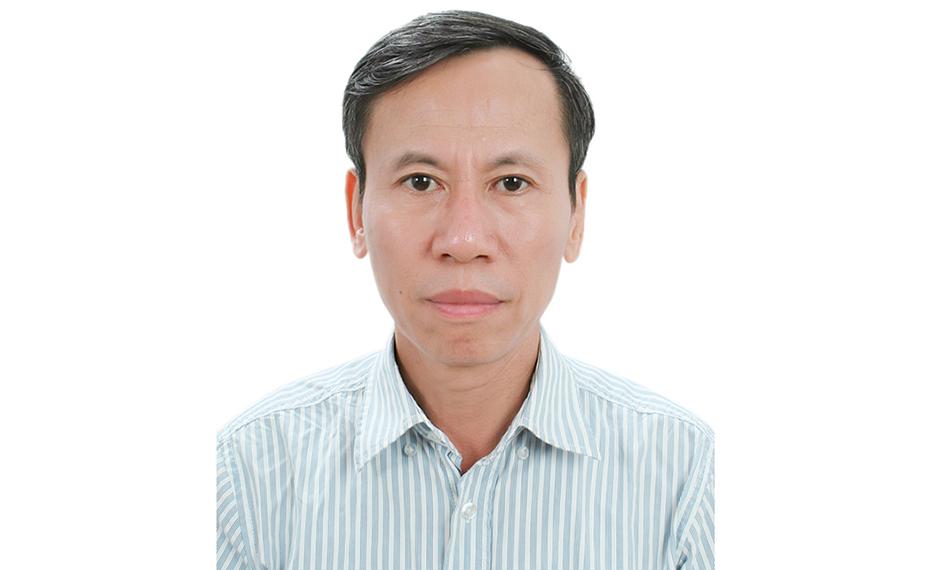Q&A with a director of bee research

Dr. Hanh Pham (PhD in environmental sciences, 2012) improved his scientific research skills and practical experience with honeybees, while studying at the University of Guelph. He returned home to Vietnam, where he works as the director of the Bee Research Center. We recently chatted with Hanh to learn more about his work with honeybees.
What is the Bee Research Center?
The Bee Research Center (BRC) falls under the National Institute of Animal Sciences (NIAS) of Vietnam. Major tasks of the BRC include conducting research and implementing beekeeping extension projects. The BRC staff are trained from several universities worldwide and in Vietnam. We collectively have many years of experience working with bees. We study breeding, pathology, feeds, products, conservation and pollination by honeybees. We are very successful in building beekeeping models across Vietnam by the application of participatory extension methods.
What is the National Institute of Animal Sciences of Vietnam?
The National Institute of Animal Sciences of Vietnam (NIAS) is the governmental institute that was established in 1952 by the Ministry of Agriculture of Vietnam. After changing the name and location of the headquarters several times, it is now located in the Bac Tu Liem District of Hanoi City. The NIAS has its branch in Binh Duong province under the name of Institute of Animal Sciences for southern Vietnam (IASVN) and 12 specific centers that study poultry, pig, cattle, goat, rabbit, duck, large ruminants, and bees.
The National Institute of Animal Sciences implements research and standards on livestock production, transfer technology in animal sciences and breeding, and trains people on animal science and production.
Tell us about your role.
I implement work and duties as assigned by the NIAS and Ministry of Agricultural and Rural Development. I oversee BRC staff and assign people work based on their personal ability, capacity and what is best suitable for them. Seeking funding is a very important part of our work, so I encourage and support staff to write project proposals, for both short- and long-term funding. In addition to managing the projects, I participate in other projects as needed.
How does the honeybee industry in Vietnam compare to Canada’s?
There are several aspects of the honeybee industry to compare. In Vietnam, there are two major managed honeybee species: the domestic honeybee (Apis cerana) and the imported European honeybee (Apis mellifera). Apis cerana is common in northern and central provinces, while Apis mellifera is kept in numerous provinces across the country. Canada has only one managed honeybee species (Apis mellifera), concentrated in the Prairie provinces, which are the major honey producers in Canada.
There are approximately 36,000 beekeepers and 1.5 million colonies in Vietnam, compared to 10,000 beekeepers and roughly 750,000 colonies in Canada. Nearly 63,000 tons of honey is produced in Vietnam each year, with 86 per cent of it being exported to the United States and European Union. In comparison, Canada produces 40,000 tons annually, with estimates of 80-90 per cent exported to the United States.
Providing pollination services is a large industry in Canada, where it is valued at approximately $2 billion annually. In Vietnam, there is no industry for pollination services; honeybees pollinate at no cost.
What is the biggest impact that the BRC has made?
The BRC conducted several studies recently and each has made an impact in its specific way. Through a project in collaboration with Syngenta Company, we conducted more than 20 trainings with farmers in northern and central provinces. We advised them on proper pesticide use including to only use approved pesticides, strictly follow guidance on labels of manufacturers, and to not use pesticides during flowering period to protect beneficial pollinators.
What are some current research projects you are working on?
In the past few years, we studied the effects of pesticide applications to honeybees (Apis cerana) on longan fruit trees (Dimocarpus longan) in Northern Vietnam. We understand that pollinators are critical to improving agricultural production and maintaining the biodiversity of ecosystems, especially in modern agriculture. However, farmers need to be trained on best practices for crop protection products so that they can gain economic benefits from having pollinators on their farms.
We are also making pollen supplements for honeybees and studying the distribution and biological characteristics of stingless bee species in Northern Vietnam. We also carry out small projects to conserve honeybee species.
How has your U of G education supported your work?
My University of Guelph education has equipped me with vast knowledge in both science and practice, especially in scientific reading and writing. I am very confident in my role after graduation. It allows me to support my team, to help improve their skills such as writing, analyzing data, and international outreach.
What inspired you to pursue your degree at the University of Guelph?
I did my master's at Institute of Ecology and Biological Resources in Hanoi. A few years later there was a collaboration with the University of Guelph on beekeeping development and rural extension in Vietnam, directed by Dr. Gard Otis, professor emeritus in the School of Environmental Sciences. The project funded one PhD candidate and I was selected. I had an opportunity to study under the supervision of Dr. Gard Otis. He guided me with his mentorship and encouragement, both in my study and in my life in Canada.
What is the most rewarding part of your job?
Working with the farmers. We transfer results of studies to farmers; we train farmers to keep bees, guide them to treat bee diseases, and teach them skills like how to rear queen bees and to process bee products such as honey and beeswax. We are happy when farmers can successfully manage their hives and receive income for their families for generations.
This article was originally published in the LIBRANNI 2022 / Vol. 4